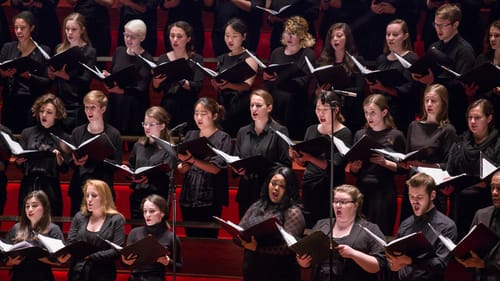Stay in the Loop
BSR publishes on a weekly schedule, with an email newsletter every Wednesday and Thursday morning. There’s no paywall, and subscribing is always free.
Searching for the spirit of Bach’s B Minor
The Philadelphia Orchestra presents Bach’s B Minor Mass

From the first murmured Kyrie (“Lord have mercy”) to the final supplication, Dona nobis pacem (“Give us peace”), the Ordinary of the Catholic Mass provides a roadmap for the journey of the soul through life, death, and eternity—guided by Bach and the Philadelphia Orchestra’s Yannick Nézet-Séguin in Verizon Hall last weekend.
Whether whispered by a devotee who believes literally in its promise of redemption and resurrection or arranged for orchestra and chorus for the delectation of musical connoisseurs, the Mass provides a framework for approaching and perhaps, for a few shining moments, understanding the grand mystery of life. No setting of the Mass does this as effectively as Bach’s Mass in B Minor, BWV 232.
One of the great works
As the Mass describes the span of a human lifetime and perhaps beyond, so Bach’s own lifetime was the context in which this paean to the timeless within the temporal was born. The great Baroque master (1685-1750) composed parts of this two-hour hymn over the decades of his own life. In his final years, blind and broken by illness, Bach stitched together individual movements and new material with existing sections of cantatas and other works he had completed in his earlier years.
Everything the composer knew and believed, from the intricacies of counterpoint to the tenets of his own strong Lutheran faith, was woven into the tapestry of this work. The result is a monument that touches believer and agnostic alike. It is one of the great works of human imagination, emotion, and craft.
Intimacy or bombast?
The B Minor Mass is not without controversy, however. Many music scholars prefer a small, intimate ensemble to express the delicacy and nuance of Baroque performance. And many early-music scholars hold a bias for the use of at least some early instruments, with their distinctive thin and reedy tones. On the other side of the spectrum are potentially large, enthusiastic audiences craving bombastic choruses prodded by thundering timpani and a walking bass that sounds more like boots on the ground.
With so many opinions and expectations surrounding the work, it’s no wonder the Philadelphia Orchestra let it lie dormant for nearly 35 years. Last weekend, however, Yannick Nézet-Séguin took up the challenge, conducting a version of the Mass with elements designed to please many, yet maintaining the integrity of Bach’s deeply felt expression of his faith.
A Goldilocks Mass
The orchestra was small (about 50 players), on mostly modern instruments (a couple of oboe d’amores added a true-to-period timbre). The Westminster Symphonic Choir, directed by Joe Miller, was large (about 100 singers) but for the most part subdued, a choice likely to please those audience members who prefer a more authentic historical sound. These balances and compromises produced a universal version of the Mass that, like the chair in Goldilocks and the Three Bears, was not too big and not too small, but just right.

Bach’s Mass has 28 movements in four sections. While some conductors choose to open this mammoth work with an attention-grabbing version of the first chorus (Kyrie), Nézet-Séguin opted to begin with a more reflective, almost tentative request (not an emotional plea) for mercy. Considering the Mass as a whole, this made sense, putting the affirmative final chorus some two hours later in sharp relief to this initial expression of uneasiness.
The final chorus (Dona nobis pacem) in fact seems to rise out of the mist of the Agnus Dei (Lamb of God), an aria beautifully sung by mezzo Karen Cargill. There is no other Agnus Dei quite like this one. Throughout his life’s work, Bach follows all the conventions of Baroque music and then some, but every now and then, he comes up with a melody or phrase that seems like nothing else in music (there’s a Sarabande in the one of the unaccompanied cello suites that similarly makes my hair stand on end). This is one of those perfect moments—like the long silence after the Crucifixus section—with a performance to match.
Spirit in the DNA?
Throughout the Mass, Nézet-Séguin commanded center stage, not only for his mastery of this music, shaping individual sections and linking them to each other with infallible knowledge and instinct, but also through his ineffable stage presence. In his luminescent white jacket, conducting without a baton, his hands never more expressive, Nézet-Séguin seemed to be linked physically to the individual musicians and singers, as though connected by invisible silken threads. The mathematical genius of Bach’s writing seemed to create a web joining conductor, musicians, and singers, who in turn shared this DNA with the large audience gathered in Verizon Hall.
However, in some ways, through no fault of the performers, the overall concert had a flatness to it. This may be because the show I saw was a matinee, and I do believe the time of day has something to do with both performance and perception. The other possibility was the hall: so modern, so clean, so austere. Move this ensemble to any run-down church in eastern Europe, illuminated by dangerous candles, and you will ratchet up the emotional content and spiritual power. At the end of the day, I felt this magnificently performed and interpreted Mass lacked the one thing Bach poured into it: profound spirituality. And that is a quality that transcends religion, music, and perhaps life itself.
What, When, Where
Bach’s Mass in B Minor, BWV 232. Johann Sebastian Bach. Conducted by Yannick Nézet-Séguin. Carolyn Sampson, soprano; Karen Cargill, mezzo-soprano; Jonas Hacker, tenor; Benjamin Appl, baritone. The Philadelphia Orchestra with the Westminster Symphonic Choir. December 5, 6, and 7, 2019, at the Kimmel Center’s Verizon Hall, 300 S. Broad Street, Philadelphia. (215) 893-1999 or philorch.org.
The Kimmel Center is an ADA-compliant venue. Patrons can purchase wheelchair seating or loose chairs online, by calling Patron Services at (215) 893-1999, or by emailing [email protected]. With advance notice, Patron Services can provide options for personal care attendants, American Sign Language, Braille tickets and programs, audio descriptions, and other services.
Sign up for our newsletter
All of the week's new articles, all in one place. Sign up for the free weekly BSR newsletters, and don't miss a conversation.

 Linda Holt
Linda Holt